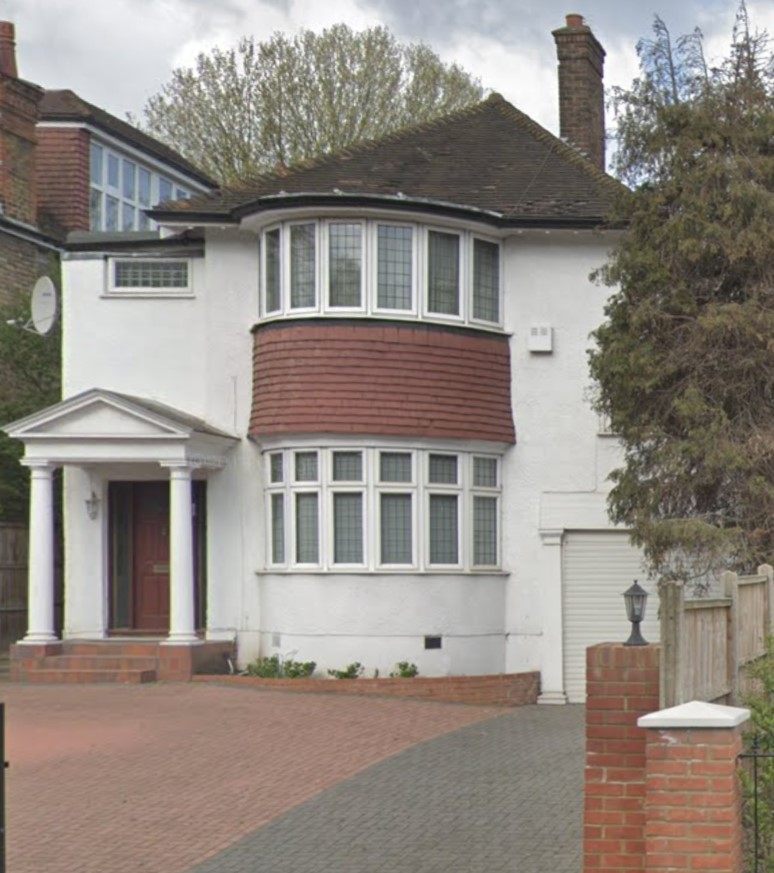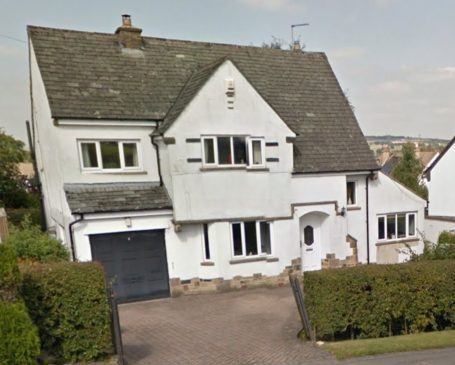
- Remove tax-free cash from your home
- You don’t need to make regular monthly payments
- Help your family to buy a house
- Stay living on your property
- Equity Release for properties with agricultural ties is new for December 2025
How much money can I get?
You can borrow 60% of your property’s valuation. For example, if your house is valued at £210,000, you can get £126,000.


Understanding the Cost of Removing an Agricultural Tie
An agricultural tie, or agrarian occupancy condition (AOC), restricts property use to those employed in agriculture, which can limit the property’s value and market appeal. For individuals inheriting a home with an agricultural tie, understanding the costs and process of removing it can make a significant difference in the property’s future potential and value.
Costs Involved in Removing an Agricultural Tie
The process of removing an agricultural tie typically requires an application to the local planning authority and can be both time-consuming and costly. Legal fees, planning application costs, and potential valuation assessments may all factor into the final price. Additionally, if you are considering selling a non-standard construction property, removing an agricultural tie can make your property more appealing to a broader market.

- Tenants In Common Over 70 Mortgage
- Equity Release Flat Roof
- Equity Release Northern Ireland Loan
- Age 50 Equity Release Loan
- Rbs Lifetime Mortgage UK
- Equity Release Mortgage Rates
Equity Release for properties with agricultural ties
- Mortgage Property With Over 10 Acres
- Market Harborough Building Society Over 70 Mortgage
- High Rise Flat Over 75 Mortgage
- Just Retirement Retirement Mortgage
- Earl Shilton Building Society
- Lifetime Mortgage Providers
- Interest Rates Equity Release Loan
- Ni Over 75 Mortgage
- Unmortgageable Property Equity Release
- Yorkshire Building Society Over 60 Mortgage
- Contaminated Property Lifetime Mortgage
- Furness Building Society Retirement Mortgage
Properties with Agricultural Ties Equity Release 2025
For property owners with agricultural ties, equity release can be a viable option to unlock funds while maintaining ownership. Competitive plans, such as Aviva Equity Release and Santander Retirement Mortgage, offer flexible solutions.
Finding the Right Plan for Agricultural Property Owners
Many lenders now offer tailored solutions, including Nationwide Equity Release and Nationwide Lifetime Mortgage, which provide fixed-rate security.
Exploring More Equity Release Providers
For those looking at alternative lenders, Coventry Equity Release and Santander Equity Release offer diverse options.
Homeowners over 65 might consider Nationwide’s 65+ plan or Nationwide’s 70+ mortgage. Other options include Santander Lifetime Mortgage.
Tailored Solutions for Specific Financial Situations
For individuals with credit challenges, Equity Release with No Credit Check and Equity Release for Bad Credit provide accessible solutions.
For retirement funding alternatives, Nationwide Retirement Mortgage and NatWest Retirement Mortgage offer structured repayment plans.
Final Considerations Before Choosing
Comparing Equity Release for Over 50s with options like Nationwide’s 75+ Plan can help secure the best financial solution.
For those considering different lenders, Cambridge Building Society and Barclays Retirement Mortgage may offer competitive alternatives.
For those looking at structured plans, NatWest Equity Release and NatWest Interest-Only Mortgage provide additional financing options.
Additional Equity Release Options
For those considering flexible lifetime mortgage plans, SunLife Lifetime Mortgage offers competitive terms.
Individuals exploring retirement schemes may find RBS Retirement Plans an effective way to secure long-term financial stability.
For those needing an interest-only mortgage from Nationwide, specialised solutions exist to accommodate different financial needs.
Older homeowners may also consider Santander’s Pensioner Mortgage for manageable borrowing options.
Final Considerations for Equity Release
Exploring Age Partnership Equity Release may provide further insights into tailored retirement plans.
Finally, those looking at structured plans for over-60s may find equity release solutions for over 60s to be a strong choice.
- Single Skin Brickwork Over 75 Mortgage
- Legal And General Pensioner Mortgage Calculator
- Aldermore Mortgage Providers
- Skipton Building Society Over 65 Mortgage
- Average Mortgage Broker Fees
- West Bromwich Building Society Retirement Mortgage
- Crown Equity Release Interest Rate
- Harpenden Building Society Over 65 Mortgage
- Leek United Over 75 Mortgage
- Dudley Building Society Equity Release Home
- Annexes or Two Kitchens Building Society in Carlisle
- Gloucester Bank Interest-Only Lifetime Mortgage Advice
- Buckinghamshire Building Society Equity Release Calculator
- Key Retirement Mortgage Rates 2025
- Aldermore Over 75 Mortgage
- Equity Release Scheme
- Equity Release Over 70 Rates 2025
- National Counties Family Building Society Over 75 Mortgage
- Hodge Lifetime 55 Mortgage
- Crown Equity Release UK
- Penrith Building Society Later Life Mortgages
- YBS Lifetime Mortgage Comparison
- London Equity Release Home
- Canada Life UK Equity Release
- Equity Release Under 60 Interest Rate
- Nationwide Mortgages for over 60s Retirement Mortgages Calculator
- Equity Release in-house under 50
- Saffron Building Society Equity Release
- Swansea Building Society No Fees
- Bath Building Society Equity Release Loan
- Equity Release Under 40 UK
- BISF Equity Release From Property
How much is it expected to release from a home
The more elderly you are and the more illnesses you have, the more tax-free cash you can release.


Areas of the UK where equity release is popular
- Cranbrook
- Hatfield
- Budleigh Salterton
- Nailsworth
- Lewes
- Axminster
- Nailsea
- Colburn
- Brampton
- Keighley
- Much Wenlock
- Thame
- Glossop
- Buckingham
- Malvern
- Heanor and Loscoe
- Christchurch
- Brentford
Equity Release LTV Percentages
- 50% monthly payment life time mortgage, Royal London Equity Release
- 25% loan to value monthly payment lifetime mortgage, Platform Mainstream
- 60% loan to value monthly payment lifetime mortgage, Key Retirement
- 30% loan-to-value (LTV) home reversion plans, Clearly Loans
- 30% loan to value, monthly payment, lifetime mortgage, Prestige
Crown Equity Release
Release Equity In House Under 55
Pure Retirement Lifetime Mortgages
- Hodge Lifetime Mortgage Flexible Drawdown Plan
- More to Life Capital Choice Plan
- Bridgewater Equity Release Schemes
- Pure Retirement Classic Voluntary Payment Super Lite
- Lloyds Bank Equity Release
- Saga home reversion schemes
- Age Partnership Equity Release
- Liverpool Victoria LV Equity Release Schemes
- NatWest Equity Release Plans
- Royal Bank of Scotland Equity Release
- Aviva Equity Release Schemes
- Stonehaven Equity Release Plan
- More 2 Life Capital Choice Plus Plan
- Age Partnership Lifetime Mortgage
What are the current Bath Building Society interest rates for equity release?
Bath Building Society’s equity release rates are 2.18% APRC.
Challenging to finance home variants can include rent charges, properties with a high estate rentcharge, leasehold properties with a short lease, typically less than 70 years, or a defective lease, derelict property or where part of the building is in severe disrepair and needs demolishing, asbestos construction and missing planning permission or building regulations approval.
Retired small business owners who may be interested in lifetime mortgages
- Other processing and preserving of fruit and vegetables in Dewsbury
- Hairdressing and other beauty treatments in Crook
- Tanning and dressing of leather; dressing and dyeing of fur, Withernsea
- Research and experimental development on biotechnology Chard
Tough-to-finance home titles can include properties built or converted into dwellings more than 10 years ago, properties with a single annexe or other self-contained part of the property, properties without direct access to an adopted highway or which are accessed over an unmade road, properties that have solar farms or a large number of wind turbines on the land and properties with mobile phone masts which are within influencing distance of the house.

Difficult-to-mortgage property variants include pre-fabricated reinforced concrete (PRC), timber-framed properties built between 1920 and 1965, properties with a minimum floor area of 30 square metres, coach houses (i.e., freehold properties with garages beneath), and basement or lower ground floor flats without level access to private or communal garden space.

Challenging to finance home variants can include properties where proposed building works have not yet commenced, age-restricted properties, right–to–buy properties in England, Wales and Northern Ireland, leasehold properties (except flats and maisonettes), and properties where the borrower(s) own the freehold with any connected party.

Common loan-to-value percentage ratios of Aviva retirement mortgages over 65, Shepherds Friendly interest only mortgages for people over 60, Churchill over 60 lifetime mortgages, Skipton Building Society interest only lifetime mortgages for people over 60, Nottingham Building Society later life interest only mortgages over 75 and Progressive Building Society later life interest only mortgages over 60 are 50%, 55% and 70%.


Does Bath Building Society offer Equity Release?
Yes, the Bath Building Society Equity Release is 5.34% MER.

Does Bath Building Society do Pensioner Mortgages?
Yes, Bath Building Society Pensioner Mortgages have an APR of 5.83%.
Do Bath Building Society do Retirement Mortgages?
Yes, Bath Building Society Retirement Mortgages are 1.94% MER.
UK Equity Release Providers
- Key Retirement
- Liverpool Victoria
- More to life
- Legal & General
Typical loan to value percentage ratios of TSB equity release plans for people over 60, Barclays Bank retirement mortgages over 65, Post Office remortgages for people over 50 years old, Legal & General interest only mortgages for over 60s near London, Royal Bank of Scotland RIO mortgages over 75 and Nationwide Building Society pensioner mortgages over 70s are 45%, 60% and 70%.
Non-Standard Property Home Index
Does Bath Building Society offer Equity Release Under 55?
Yes, the Bath Building Society Equity Release Under 55 has a 2.22% MER.
The 1st and 2nd charge lenders will want to know whether the property is a Detached freehold house or a Leasehold house, and whether the resident is a Private Tenant.
Agricultural tie or restriction•Over 10 acres of land•Farms/smallholdings
Properties with more than 10 acres of land•Small scale hobby farming
Properties with up to 10 acres of land without large outbuildings or equestrian facilities
Properties with more than six bedrooms
Many of the most appealing retirement finance offerings are Lloyds mortgages for 60-plus pensioners, Barclays Bank interest-only mortgages for over-65-year-olds, Post Office mortgages for over-65s, Legal & General pensioner mortgages for over-70s and Nationwide Building Society mortgages for 60-plus pensioners.
Does Bath Building Society offer Lifetime Mortgages?
Yes, Bath Building Society do lifetime mortgages at 2.01% MER. Bath Building Society Lifetime Mortgages have a loan-to-value (ltv) of 70%.
